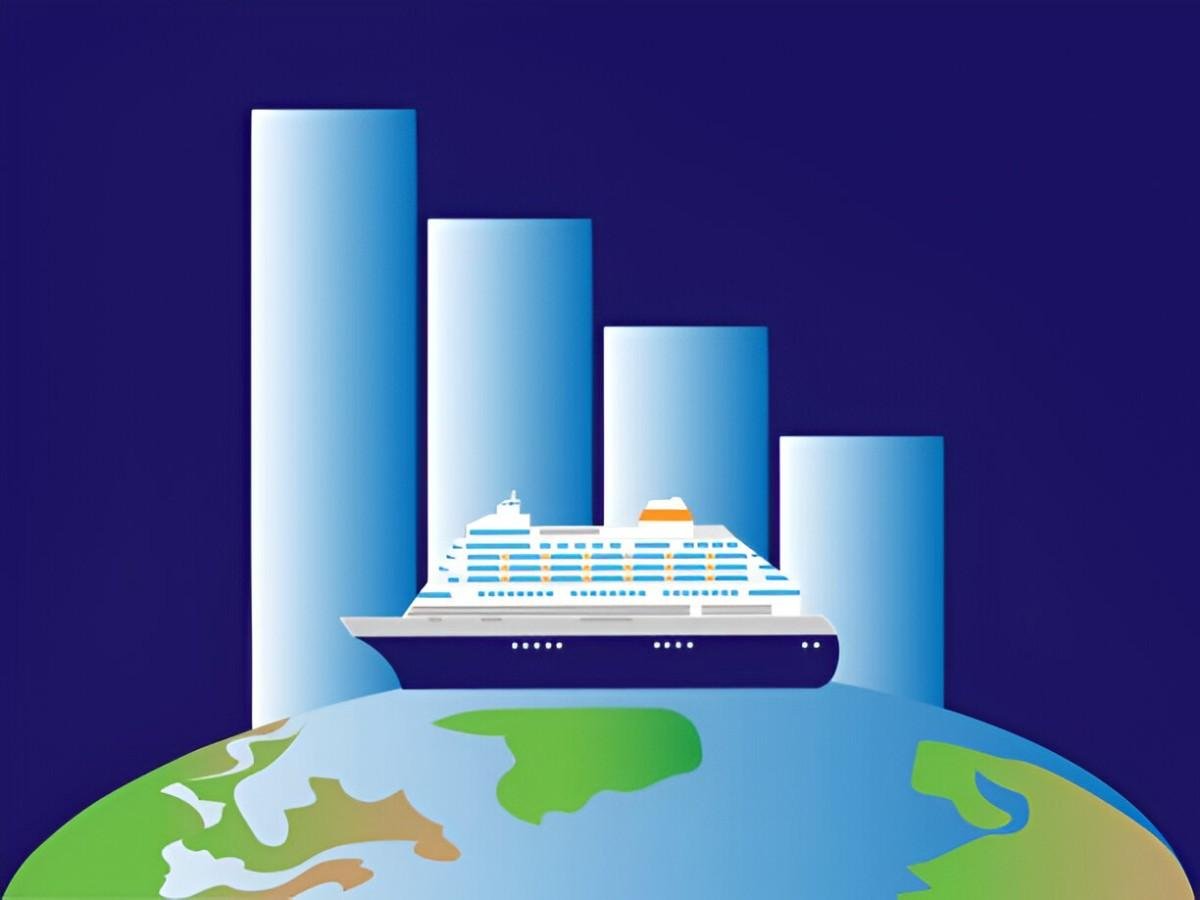Investing in cruise ship stocks has always been an intriguing yet somewhat controversial option for many investors. For some, cruise stocks represent an exciting opportunity to capitalize on the global travel and leisure industry. For others, they are a risky venture with potential volatility. In this article, I will explore the various factors that influence cruise ship stock performance, analyze the pros and cons of investing in these companies, and offer a comprehensive guide to help you determine whether they’re a suitable investment for your portfolio.
Table of Contents
The Cruise Industry: A Snapshot
Before diving into the specifics of cruise ship stocks, it’s important to understand the broader landscape of the cruise industry. The global cruise industry is massive, with millions of passengers taking to the seas every year. According to the Cruise Lines International Association (CLIA), the cruise industry is a multi-billion-dollar business, contributing significantly to the global economy.
In 2019, for example, the industry generated over $150 billion in economic impact globally. It employed hundreds of thousands of people, from crew members aboard ships to staff at travel agencies. The primary players in the cruise industry include well-known companies like Carnival Corporation, Royal Caribbean Cruises, and Norwegian Cruise Line Holdings, among others.
Cruise lines provide passengers with a floating resort experience, offering a range of amenities such as entertainment, dining, and activities while they travel to various destinations. This unique offering has attracted a steady stream of customers over the years, driving growth in the sector. However, like any industry, the cruise sector also faces challenges, such as economic downturns, geopolitical instability, and unforeseen events like the COVID-19 pandemic, which wreaked havoc on the industry.
Cruise Ship Stocks: The Main Players
When it comes to investing in cruise ship stocks, there are a few key companies that dominate the market. Let’s take a closer look at the major players and their stock performance.
1. Carnival Corporation (CCL)
Carnival Corporation is the world’s largest cruise operator, with a fleet of over 100 ships under several brand names, including Carnival Cruise Line, Princess Cruises, and Holland America Line. The company has a global presence, operating in regions such as North America, Europe, and Asia. Carnival’s stock has traditionally been considered a solid long-term investment, but the COVID-19 pandemic significantly impacted its financials, leading to a decline in stock value.
Before the pandemic, Carnival’s stock had performed well, often yielding consistent dividends. However, the company had to suspend operations in 2020, resulting in a sharp decline in revenue. The stock price plummeted, and dividends were suspended to preserve cash. As the industry began to recover in 2021, Carnival’s stock showed signs of recovery, but it still faces uncertainty due to lingering pandemic-related risks.
2. Royal Caribbean Cruises Ltd. (RCL)
Royal Caribbean Cruises is another major player in the cruise industry, known for its luxurious ships and innovative onboard amenities. The company owns several well-known brands, including Royal Caribbean International, Celebrity Cruises, and Azamara. Royal Caribbean’s stock, like Carnival’s, experienced significant declines during the pandemic but began to recover as cruises resumed in 2021.
Royal Caribbean has historically been a strong performer in the stock market, with steady growth and solid profitability. However, the company is heavily reliant on the tourism industry, which makes it susceptible to economic downturns, natural disasters, and other external factors. Despite these risks, Royal Caribbean remains a popular choice for long-term investors due to its brand recognition and commitment to innovation in the cruise sector.
3. Norwegian Cruise Line Holdings Ltd. (NCLH)
Norwegian Cruise Line Holdings is another major player in the cruise industry, known for its “Freestyle Cruising” concept, which offers passengers more flexibility in terms of dining and activities. The company operates brands like Norwegian Cruise Line, Oceania Cruises, and Regent Seven Seas Cruises.
Like its competitors, Norwegian Cruise Line’s stock took a hit during the pandemic, but the company has made efforts to recover by implementing health and safety measures aboard its ships. The company has also been focused on fleet expansion, with new ships set to debut in the coming years. Norwegian’s stock has shown a gradual recovery, but as with all cruise stocks, it remains vulnerable to external factors.
Factors That Affect Cruise Ship Stock Performance
When evaluating cruise ship stocks, it’s essential to understand the various factors that can influence their performance. These factors include both internal and external elements, such as:
1. Economic Conditions
Like any industry, the cruise sector is sensitive to changes in economic conditions. During periods of economic expansion, more people tend to have disposable income to spend on leisure activities, including cruises. Conversely, during economic downturns, people may cut back on discretionary spending, leading to lower demand for cruises. This can directly impact cruise line revenues and stock prices.
For instance, during the 2008 financial crisis, cruise stocks experienced significant declines as the global economy faltered. Similarly, the COVID-19 pandemic caused widespread disruptions in the cruise industry, leading to a temporary suspension of operations and a steep drop in stock prices.
2. Fuel Prices
Cruise lines rely heavily on fuel for their operations. Fluctuations in oil prices can have a significant impact on a cruise line’s operating costs. When fuel prices rise, cruise companies face higher expenses, which can reduce their profitability. On the other hand, lower fuel prices can boost margins and improve earnings.
For example, in 2014, when oil prices fell sharply, many cruise companies saw their costs decrease, resulting in higher profits and increased stock prices.
3. Consumer Confidence and Travel Trends
The demand for cruises is closely tied to consumer confidence in the travel and leisure sector. When people feel secure about their finances and overall economic conditions, they are more likely to book a cruise vacation. Conversely, if consumers are concerned about factors like job security or global instability, they may choose to forgo cruises.
Additionally, changes in travel trends can influence the cruise industry. For example, in recent years, there has been a growing preference for luxury and experiential travel, which has led to the rise of high-end cruise offerings and specialty cruises.
4. Geopolitical Risks
Cruise lines operate on a global scale, and they are exposed to geopolitical risks that can impact their operations. These risks include political instability, natural disasters, and changes in travel regulations. For example, in 2020, the pandemic caused widespread lockdowns, forcing cruise lines to suspend operations worldwide. Similarly, geopolitical tensions in regions like the Middle East or South America can impact cruise routes and passenger demand.
5. Fleet Expansion and Innovation
Another factor that can influence cruise stock performance is a company’s commitment to fleet expansion and innovation. Cruise lines that invest in new ships, offer unique experiences, and incorporate cutting-edge technology tend to attract more passengers, which can drive growth. For example, Royal Caribbean’s Oasis-class ships are known for their innovative features, which have helped the company maintain a competitive edge.
6. Health and Safety Concerns
In recent years, health and safety concerns have become a significant factor in the cruise industry. The COVID-19 pandemic highlighted the vulnerabilities of cruise ships as breeding grounds for viruses. Cruise companies have had to implement strict health protocols to ensure passenger safety, and any failure to manage these concerns effectively can result in reputational damage and financial losses.
Risks of Investing in Cruise Ship Stocks
While cruise ship stocks offer potential for growth, they come with certain risks that investors must be aware of. These include:
1. Volatility
The cruise industry is known for its volatility, especially during times of economic uncertainty or global crises. As seen during the COVID-19 pandemic, cruise stocks can experience sharp declines when operations are disrupted. This volatility can be a concern for conservative investors who prefer more stable, predictable returns.
2. High Debt Levels
Many cruise companies carry substantial debt, which can pose risks during periods of economic hardship. For example, during the pandemic, cruise lines had to take on additional debt to stay afloat as revenues dwindled. High debt levels can limit a company’s ability to invest in new ships or expand operations, potentially hindering growth prospects.
3. Regulatory and Legal Risks
Cruise lines operate in a highly regulated environment, with strict laws governing passenger safety, environmental impact, and labor practices. Any changes to these regulations, or legal challenges related to issues like environmental compliance or employee rights, could negatively impact a company’s reputation and bottom line.
4. Environmental and Social Impact
The environmental impact of cruise ships has become an increasingly important concern for both consumers and investors. Cruise lines are under pressure to adopt more sustainable practices, such as reducing emissions and improving waste management. Failure to meet these environmental standards could result in fines, reputational damage, and reduced demand from eco-conscious travelers.
Is Investing in Cruise Ship Stocks a Good Idea?
Ultimately, whether cruise ship stocks are a good investment depends on your personal financial goals, risk tolerance, and investment strategy. While these stocks offer the potential for significant returns, they also carry risks that may not be suitable for all investors. If you are comfortable with the volatility of the sector and have a long-term investment horizon, cruise stocks could provide an opportunity for growth. However, if you are risk-averse or have a short-term investment focus, you may want to approach these stocks with caution.
A Comparison of Cruise Line Stocks
| Company | Fleet Size | Recent Stock Performance | Market Capitalization | Dividend Yield (Pre-Pandemic) | Debt-to-Equity Ratio (2021) |
|---|---|---|---|---|---|
| Carnival Corporation | 100+ ships | Decline during pandemic, recovery signs | $30 billion | 4% | 4.6 |
| Royal Caribbean Cruises | 60+ ships | Recovery after pandemic | $25 billion | 2% | 3.2 |
| Norwegian Cruise Line | 30+ ships | Slow recovery | $15 billion | 2.5% | 5.0 |
Final Thoughts
In conclusion, cruise ship stocks can be an attractive investment for those willing to navigate the sector’s volatility and risks. The industry has shown resilience in bouncing back from setbacks, and companies like Carnival, Royal Caribbean, and Norwegian are making strides in recovery post-pandemic. However, investors should carefully consider their risk tolerance, financial goals, and market conditions before diving into these stocks. A diversified investment portfolio that includes cruise stocks could offer potential rewards, but it’s essential to approach this decision with a clear understanding of the risks involved.





